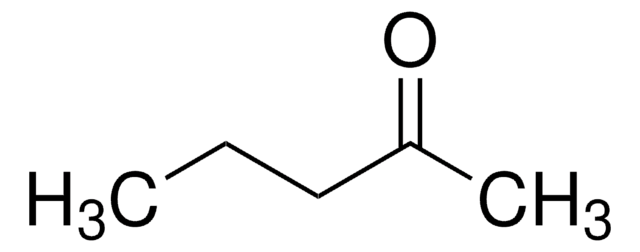Key Documents
676853
Dichloromethane
ACS reagent, ≥99.5%, contains 40-150 ppm amylene as stabilizer
Synonim(y):
Methylene chloride
About This Item
Polecane produkty
klasa czystości
ACS reagent
Poziom jakości
gęstość pary
2.9 (vs air)
ciśnienie pary
24.45 psi ( 55 °C)
6.83 psi ( 20 °C)
Próba
≥99.5%
Postać
liquid
temp. samozapłonu
1223 °F
zawiera
40-150 ppm amylene as stabilizer
granice wybuchowości
22 %
zanieczyszczenia
Free halogens, passes test
≤0.0003 meq/g Titr. acid
≤0.02% water
pozostałość po odparowaniu
≤0.002%
kolor
APHA: ≤10
współczynnik refrakcji
n20/D 1.424 (lit.)
tw
39.8-40 °C (lit.)
mp
−95 °C (lit.)
gęstość
1.325 g/mL at 25 °C (lit.)
ciąg SMILES
ClCCl
InChI
1S/CH2Cl2/c2-1-3/h1H2
Klucz InChI
YMWUJEATGCHHMB-UHFFFAOYSA-N
Szukasz podobnych produktów? Odwiedź Przewodnik dotyczący porównywania produktów
Zastosowanie
- Synthesis of Remdesivir Derivate as a Generation of Anti-COVID-19 Drugs Through Acetylation Reactions.: This study involves the synthesis of a derivative of Remdesivir, aiming to enhance anti-COVID-19 activity through acetylation. Dichloromethane plays a critical role in the solvent system used during synthesis, impacting the reaction conditions and outcomes (Sumardi et al., 2023).
- Antioxidant potentials of extracts from different parts of Clinacanthus nutans (Burm. f.) Lindau.: Investigates the antioxidant properties of various extracts from Clinacanthus nutans, where dichloromethane is utilized for the extraction process. This research highlights dichloromethane′s efficiency in isolating antioxidant compounds from plant materials (Duy Dang K et al., 2024).
- Correlation between intestinal toxicity and composition changes of toxic parts from Euphorbia ebracteolata before and after Terminalia chebula soup processing: Discusses changes in toxic components of Euphorbia ebracteolata post-processing. Dichloromethane is critical for extracting and analyzing these components, demonstrating its importance in toxicological assessments (Lin WH et al., 2024).
- Isolation of a Marker Olean-12-en-28-butanol Derivative from Viscum continuum E. Mey. Ex Sprague and the Evaluation of Its Antioxidant and Antimicrobial Potentials.: Focuses on isolating specific compounds from Viscum continuum using dichloromethane, illustrating its utility in pharmacognosy for identifying bioactive substances (Mapfumari et al., 2024).
Cechy i korzyści
produkt powiązany
Hasło ostrzegawcze
Warning
Zwroty wskazujące rodzaj zagrożenia
Zwroty wskazujące środki ostrożności
Klasyfikacja zagrożeń
Carc. 2 - Eye Irrit. 2 - Skin Irrit. 2 - STOT SE 3
Organy docelowe
Central nervous system
Kod klasy składowania
6.1D - Non-combustible acute toxic Cat.3 / toxic hazardous materials or hazardous materials causing chronic effects
Klasa zagrożenia wodnego (WGK)
WGK 2
Temperatura zapłonu (°F)
does not flash
Temperatura zapłonu (°C)
does not flash
Certyfikaty analizy (CoA)
Poszukaj Certyfikaty analizy (CoA), wpisując numer partii/serii produktów. Numery serii i partii można znaleźć na etykiecie produktu po słowach „seria” lub „partia”.
Masz już ten produkt?
Dokumenty związane z niedawno zakupionymi produktami zostały zamieszczone w Bibliotece dokumentów.
Nasz zespół naukowców ma doświadczenie we wszystkich obszarach badań, w tym w naukach przyrodniczych, materiałoznawstwie, syntezie chemicznej, chromatografii, analityce i wielu innych dziedzinach.
Skontaktuj się z zespołem ds. pomocy technicznej



